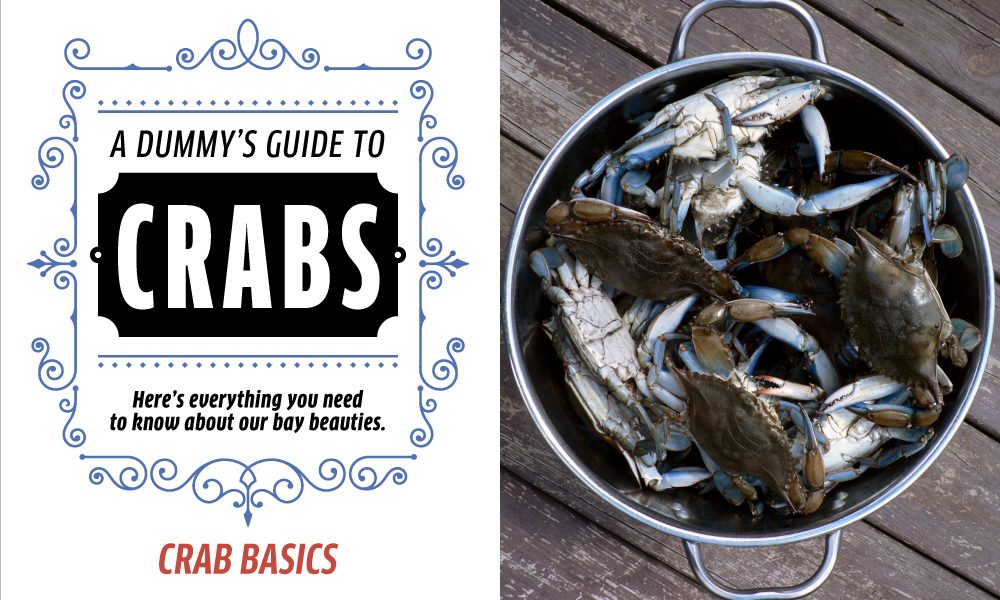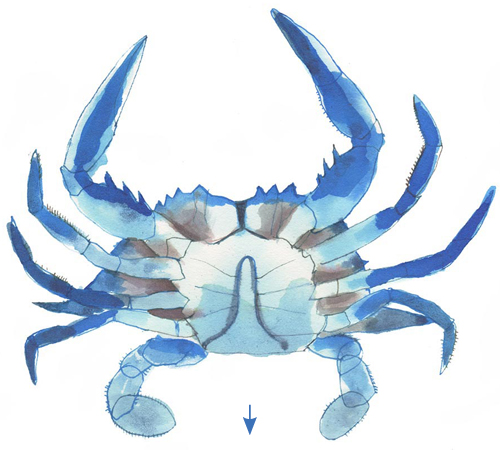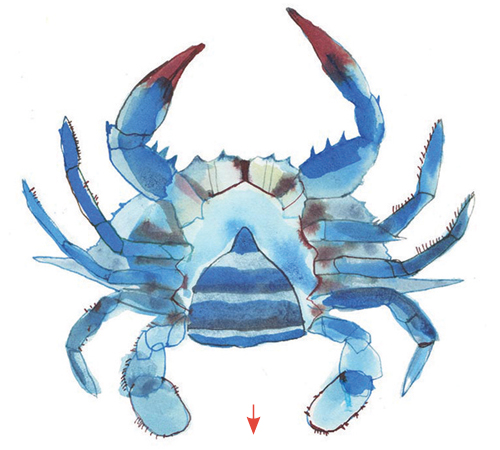Food & Drink
A Dummy's Guide to Crabs: Crab Basics
Here’s everything you need to know about our bay beauties.
With summer in full force, and so many culinary treasures in the bay, there’s no time like the present to sing the praises of our blues (crabs, that is). Whether coddled into cakes, picked over paper, or transformed into savory salads, these sidestepping sweeties fill us with local pride in all their glorious incarnations. But much as crabs can lead to innumerable pleasures on the plate, there’s a lot to know about cooking, cleaning, and consuming them. Our Dummy’s Guide is a primer for rookies and a refresher course for those who already know a Jimmy from a Sook. (Hint: One has lovely lady lumps.) That being said, it’s time to educate. Silence in the classroom, kids. Let’s get crackin’.
Can’t get enough crabs? Be sure to check out our 2014 Crab Buyer’s Guide and Home Plates.
MALE VS. FEMALE
Much myth surrounds the taste differences between the sexes, but, truth be told, other than the fact that the ladies are lighter than the gents, experts say there’s no distinction in flavor.
Illustrations by Rebecca Bradley
A “Jimmy” or male crab has blue claws and an inverted t-shaped apron (or abdomen) as his distinguishing feature. Increased crabbing restrictions for the fairer species have kept the Jimmy in more constant rotation. Males have flakier meat
The sexually mature female crab or “Sook” (known to waterman as a “Sally” in its immature phase) is the best-groomed swimmer in the bay, with red tips on her talons and a trademark bell-shaped apron. Females tend to have denser meat.
LOCAL VS. GLOBAL
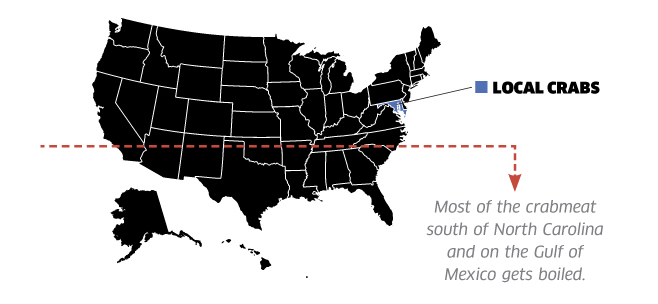
With slim pickins, due to overharvesting and extreme winters, purveyors have had to go global in sourcing their meat from Southeast Asia and South America, as well as Texas, Louisiana, and North Carolina. While all the crabs caught are the same species, the difference is the way in which the crustaceans are cooked. “The crabs from our waters are steam-cooked,” says Andy Hoffman, owner of Pikesville’s Gourmet Again. “Crab that is steamed-cooked doesn’t lose the mustard. Most of the crabmeat south of North Carolina and on the Gulf of Mexico gets boiled.” Crabmeat sourced from South America lacks the rich flavor that is particular to Maryland crabs. “Flavor is lost in boiling,” Hoffman says. And crabs from Southeast Asia get pasteurized and taste metallic, “like a tin can.”
CRAB VOCAB
Apron: The abdomen of a crab.
Callinectes sapidus: The Latin name for the blue crab. Translation: “beautiful savory swimmer.”
Crab pot:An enclosed framework of wire with four openings. When crabs enter to eat the bait, they are trapped; used for bay crabbing.
Molt: As invertebrates, crabs lack a spinal column. For the crab to grow larger, it molts, or sheds its shell periodically. A molting crab is said to be a “soft-shell.”
Mustard: Yellowy substance found inside a cooked crab. The mustard is an organ that helps the crab filter impurities in its blood.
Picking: The art of eating a steamed crab by teasing the meat out of those hard-to-reach appendages.
She-crab: An immature female crab, also known as a “Sally.”
Sponge: The orange eggs of a female crab that spread across the abdomen; the average sponge contains about two million eggs.
Trotline: A long fishing line to which bait is attached at a series of intervals. Commonly used in the Chesapeake Bay region.
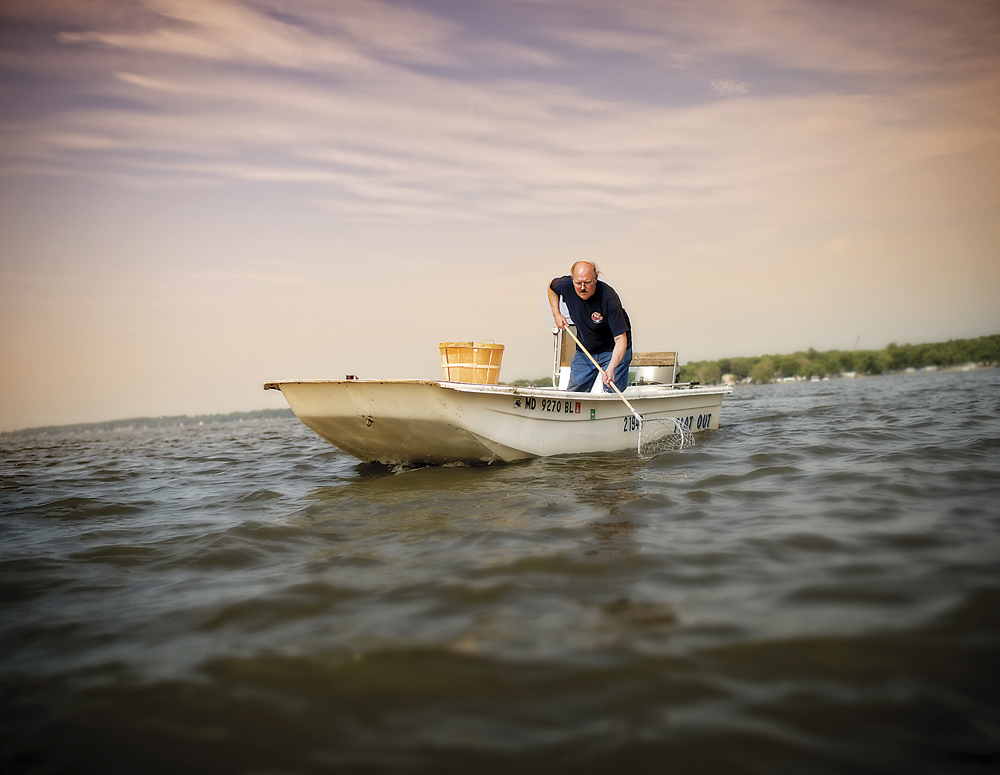
WATER LOG: A DAY IN THE LIFE OF A CRABBER
If you think your desk job is hard, try the labor-intensive work of commercial crabbers, many of whom go on little sleep during the season (running roughly May through October). “People complain about the price of crab,” says lifelong crabber Bruce Shroyer, above, who sells supplies out of his Crabbing Barn in North East, MD, “but they have no idea what it takes to get the crab there in the first place.” To maximize fishing time, the professionals live by the clock, which starts ticking one hour before sunrise (the earliest time a licensed crabber can lay lines or place pots). Below is a typical day in the life of a waterman, though during soft-shell season, crabbers stay up around-the-clock to check their peeler pots.
2 a.m.: Stock boat with anchors, buoys, and 100 pounds of bait. Pre-bait 6,000 feet of trotline with bull lips, Razor clams, chicken necks, salted eel, and other crab munchies.
3:30 a.m.: Head to favorite spot on the Chesapeake and its tributaries.
4 a.m.: Lay trotlines (considered illegal for the bay) in the river where large populations of crabs can be found. Note to self: Crabs bite best during the first four hours of the morning when they are hungriest.
5 to 6 a.m.: Soak crab pots for bay crabbing. (Remember, 300 pots per day is the legal limit.) Let soak two to three days.
6 a.m. to noon: Check on previously placed pots and/or run trotlines. Haul catch with help of stainless-steel dipper. Sift, sorting by size and sex. Use tongs. Wear gloves. Watch fingers!
Noon: Crack open a can of baked beans for some quick refueling, but no sitting on the job.
12:10 to 3 p.m.: Hold bladder, if possible, and continue to catch as catch can. Rebait trotlines at end of day. Store in brine for tomorrow’s catch.
3 until ?: Sell 10-bushel haul to area bars and seafood purveyors. Tomorrow is another day. Keep on crabbing!
